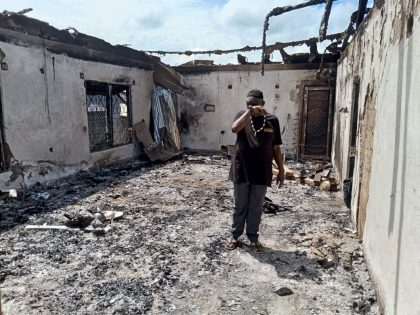Vamba Sherif’s ‘Bound to Secrecy’ is masterful storytelling

In 2012, The Economist Magazine’s style blog, Prospero, featured an essay titled “War and Peace in Monrovia: Where is Liberia’s Tolstoy?”. The essay was written by a journalist who visited Liberia for research on a magazine feature about an ex-warlord running for president. While in Freetown, during what he explains was an unexpected amount of free time, he began to read Leo Tolstoy’s War and Peace. The essay then becomes an exposition of writer’s annoyance with his stay in Liberia, with the usual jabs at the weather, lack of book stores, devastated infrastructure and other issues typical to traveller’s Facebook updates. The author’s main complaint, however, was that Liberia lacked a writer who had made a successful attempt at publishing an epic-length civil-war era narrative, and to a lesser extent, competent writers in general; these failures, he argued, was indicative of the trajectory of the country and the psychology of its people.
He’d clearly never heard of Vamba Sherif. By the time this essay was published, Sherif had authored 4 books: The Land of the Fathers (1999), The Kingdom of Sebah (2003), Bound to Secrecy (2007), and The Witness (2011). Sherif’s third novel, Bound to Secrecy, is a detective novel based in a remote Liberian border town, Wologizi. The story’s protagonist, William Mawolo, visits Wologizi to investigate the disappearance of the paramount chief, but hostility from locals frustrate his efforts at arriving at the truth. He asserts his authority over the town, and in doing so exposes himself to danger. Bound to Secrecy was first published in Dutch and recently published in English by London-based Hope Road Publishing. The action takes place in the fictional forest town of Wologizi in Liberia; there, a detective named William Mawolo is sent by Old Man to investigate the disappearance of a town Chief named Tetese. A storyteller by trade, Tetese suddenly disappears, and Mawolo finds himself navigating a maze of unbelievable testimonies, dubious allies and eventually, fear for his own safety. His puzzling time in Wologizi is only coaxed by his love of a surprising ingénue, Tetese’s daughter, Makema. Sherif’s thorough knowledge of Liberia’s complex political system also contributes to this world of rich and diverse characters—a Corporal Gamla widely known as “The Torturer,” Old Kapu, a host with many wives, the Lebanese shop owner the residents of Wologizi refer to as “Baldhead”.
With every page, the reader shares Sherif’s main character’s confusion, and as the book progresses, becomes unsure of which testimony to believe, which character is trustworthy, and which encounter is a main event. Each character’s rendition of the events around Tetese’s disappearance contradicts the last, exploring themes of community, loyalty, superstition and narrative traditions made famous by African storytellers. Conventional Western narrative traditions are incorporated, but Sherif is not trying to be Tolstoy in order to prove himself worthy.
Sherif is a master storyteller whose multi-linguality is definitely evident in the lyricism of his writing; the translation to English doesn’t lose that quality. He tells stories of Liberia for the Liberian reader, without pandering to or losing his Western readers’ ability to get the culturally specific references in his writing. Sherif’s honesty in framing this contemporary Liberian town, still deeply rooted in the superstitions and sexism of traditional, insular inland communities, is refreshing, its impression lasting, haunting. As with all detective stories – and with life – the answer to the riddle is under William Mawolo’s nose the entire time.



















